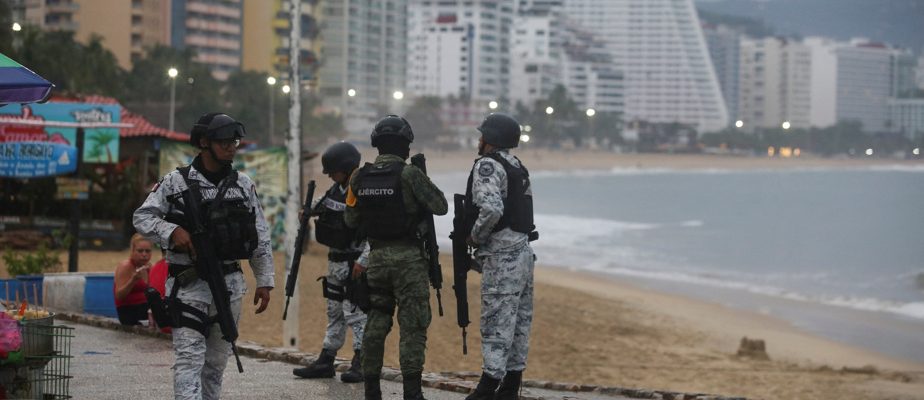(Acapulco) The legendary seaside resort of Acapulco, in southwest Mexico, was partially devastated and cut off from the rest of the country on Wednesday evening almost 24 hours after the passage of a powerful hurricane.
“There are no plane flights. There are no buses between Mexico City and Acapulco,” noted an AFP photographer after the hurricane. Otis which made landfall with wind gusts of up to 315 km/h, according to the Mexican government.
“There is no internet signal or electricity,” continued the journalist who had to leave the city to transmit his own photos.
The authorities have not yet made mention of any victims.
The hurricane has particularly affected tourists and visitors, who cannot go out or call their loved ones.
“I hope someone from my family sees me so they know I’m okay,” said a Mexican tourist, Nely Palacios, to the Televisa channel, which was able to broadcast images of the damage.
These first images showed luxury hotels and shopping centers reduced to their cement structures, as well as scenes of looting.

PHOTO MARCO UGARTE, ASSOCIATED PRESS
Trucks are immobilized on a highway blocked by a landslide.
The windows of the iconic Princess Hotel were shattered and the building was partially destroyed, according to a video circulating on social media.
“The material damage is devastating. We have no water, we have no light, but we are safe,” Citlali Portillo, administrator of a tourist residence, told Televisa.
“The building was moving like it was an earthquake!” “, she added.
The force 5 hurricane made landfall Wednesday shortly after midnight local time (2 a.m. Eastern Time). It had formed very quickly within a few hours off the Pacific coast of Mexico.
Taken by surprise, the residents protected themselves as best they could. “We had to close the doors with what we found,” Eric Hernandez told AFP.
Living in a nearby village, this 24-year-old young man was accompanying a relative to a clinic in Acapulco when the hurricane hit.
“We could see how it (the hurricane) took away the cars,” he added as he walked home. “The floor of the clinic was moving.”
Mexican President Andres Manuel Lopez Obrador attempted to travel to Acapulco by road.
His journey was delayed due to landslides on the road. The highway is clogged with mud, water and uprooted trees, the AFP team noted.
“We are going to make sure that (the highway) is reopened as soon as possible,” he told journalists stranded with him on the road.
“The most important thing is to take care of the affected populations. We still have no assessment of the damage, because there are no communications,” national Civil Protection coordinator Laura Velazquez told Milenio television.
At daybreak on Wednesday, a large part of Acapulco – which has nearly 780,000 inhabitants – was without electricity following a preventive cut, according to local media.
The Federal Electricity Commission (CFE, public) indicated that it had restored power on Wednesday to 40% of the 504,000 users affected in the Acapulco region.
After making landfall, the hurricane weakened as expected as it progressed into the hinterland.
Paulina, Norma, Patricia, Ingrid…
On October 9, 1997, Acapulco was hit by Paulina, which caused the death of more than 200 people and caused one of the most serious natural disasters in the country, apart from an earthquake.
Last week, Hurricane Norma killed three people a little further north, in the state of Sinaloa.
Open to the Pacific and the Gulf of Mexico, Mexico is exposed to hurricanes during the season which runs from May to October-November.
In September 2013, Hurricane Ingrid in the Gulf and Tropical Storm Manuel in the Pacific simultaneously took over Mexico.
With the warming of the ocean surface, the frequency of the most intense cyclones (or hurricanes or typhoons depending on the region) increases.
According to the International Group of Climate Experts (IPCC), the proportion of particularly intense cyclones (category 4 and 5) should increase by 10% compared to the pre-industrial era with a warming of +1.5°C. .
Due to rising sea levels and marine flooding, more than a billion people will live in coastal cities at risk by 2050, according to the IPCC.
